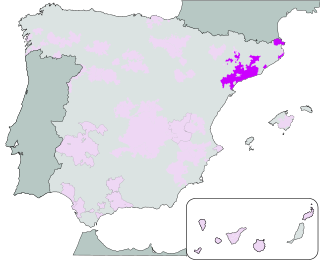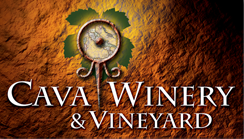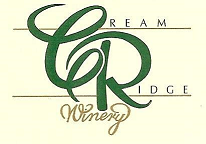Related Research Articles

Strewn Winery is a small winery in Niagara-on-the-Lake, Ontario, Canada. It was established in 1997 by winemaker Joe Will and his wife, food writer Jane Langdon. Located on the former site of the Niagara Canning Company, it is Canada's first winery cooking school and its teaching "highlights the close relationship between food and wine."

New Zealand wine is produced in several of its distinct winegrowing regions. As an island country in the South Pacific Ocean, New Zealand has a largely maritime climate, although its elongated geography produces considerable regional variation from north to south. Like many other New World wines, New Zealand wine is usually produced and labelled as single varietal wines, or if blended, winemakers list the varietal components on the label. New Zealand is best known for its Marlborough Sauvignon Blanc, and more recently its dense, concentrated Pinot Noir from Marlborough, Martinborough and Central Otago.

Brown Brothers Milawa Vineyard is a family-owned wine company based in Milawa, Victoria, Australia. Brown Brothers was founded in 1889 by John Francis Brown and continues to be owned and operated by his descendants on the original property. Brown Brothers makes wine from a wide range of grape varieties and into a range of styles.

Washington wine is a wine produced from grape varieties grown in the U.S. state of Washington. Washington ranks second in the United States in the production of wine. By 2017, the state had over 55,000 acres of vineyards, a harvest of 229,000 short tons of grapes, and exports going to over 40 countries around the world from the 940+ wineries located in the state. While there are some viticultural activities in the cooler, wetter western half of the state, the majority (99.9%) of wine grape production takes place in the shrub-steppe eastern half. The rain shadow of the Cascade Range leaves the Columbia River Basin with around 8 inches (200 mm) of annual rain fall, making irrigation and water rights of paramount interest to the Washington wine industry. Viticulture in the state is also influenced by long sunlight hours and consistent temperatures.
The state of Oregon in the United States has established an international reputation for its production of wine, ranking fourth in the country behind California, Washington, and New York. Oregon has several different growing regions within the state's borders that are well-suited to the cultivation of grapes; additional regions straddle the border between Oregon and the states of Washington and Idaho. Wine making dates back to pioneer times in the 1840s, with commercial production beginning in the 1960s.

Columbia Winery is a Washington state winery located in Woodinville, Washington. The winery is currently owned by E & J Gallo Winery. The winery was founded in 1962 as Associated Vinters by several former professors at the University of Washington. In 1979, the winery hired David Lake as head winemaker and under his stewardship, Columbia Winery was the first winery in the state of the Washington to produce varietal wines of Cabernet Franc, Pinot gris and Syrah. In 1983, the winery released wines under its current name. In 1988, the winery moved to its current location in Woodinville wine country. Due to failing health, David Lake retired from Columbia in 2006. In 2006, Kerry Norton (formerly of Covey Run Winery was hired as Director of Winemaking. In June 2008, Columbia Winery were sold by Constellation Brands to newly formed Ascentia Wine Estates, which in turn sold Columbia to Gallo in 2012.

Catalunya is a Spanish Denominación de Origen Protegida (DOP) for Catalan wine which was formally recognised in 2001. It was created with the specific purpose of providing commercial support to over 200 wineries (bodegas) that produced quality wine but which were not included in other specific DOP's in Catalonia. It does not have a specific geographical location but is formed by over 40 km2 of individual vineyards which are dispersed all over Catalonia, and allows mixing of grapes from other DOPs.

Bridgeview Vineyard and Winery is one of the largest wineries in Oregon. It is located in Cave Junction, Oregon. Its 85-acre (340,000 m2) estate in the Illinois Valley is planted in the European style of dense six-foot row and four-foot vine spacing. Bridgeview also has an 80-acre (320,000 m2) vineyard in the Applegate Valley.

Victorian wine is wine made in the Australian state of Victoria. With over 600 wineries, Victoria has more wine producers than any other Australian wine-producing state but ranks third in overall wine production due to the lack of a mass bulk wine-producing area like South Australia's Riverland and New South Wales's Riverina. Viticulture has existed in Victoria since the 19th century and experienced a high point in the 1890s when the region produced more than half of all wine produced in Australia. The phylloxera epidemic that soon followed took a hard toll on the Victoria wine industry which did not fully recover till the 1950s.

The Old Mission Peninsula AVA is an American Viticultural Area located in Grand Traverse County, Michigan known for well-regarded Michigan wine. The Old Mission Peninsula extends northward from Traverse City into the Grand Traverse Bay of Lake Michigan, ending at Old Mission Point. The peninsula is 19 miles (31 km) long by 3 miles (5 km) wide at its widest point. The climate on the peninsula is moderated by the surrounding waters, helping to prevent frost during the growing season. Grape varietals suitable to cool climates, such as Riesling, Chardonnay, Gewürztraminer, Pinot gris, Pinot noir, Cabernet Franc, and Merlot do best in the Old Mission Peninsula AVA.
Foris Vineyards Winery is an American winery located near Cave Junction, Oregon in the Illinois Valley region of the Rogue Valley AVA of Southern Oregon. As one of Oregon's pioneering grape growers, Ted Gerber planted his first vineyard in 1974. For 15 years, Gerber provided fruit to other winemakers, until 1986 when the winery was founded by Ted and Meri Gerber and the Foris label was launched.
British Columbia wine is Canadian wine produced in the province of British Columbia. Wines made from 100% British Columbia grapes can qualify for classification under one of British Columbia's two classification systems, depending on the variety, the winemaking techniques employed, and various other restrictions.

Reif Estate Winery is located in Niagara-on-the-Lake in Ontario, Canada. Reif Estate is primarily known for playing an important in role pioneering the Ontario wine Industry, as well as planting some of the first Vitis vinifera vines in the Niagara region.

Dutch wine is wine made in the Netherlands. Although a small producer of wine, it is nowadays a strong growing branch of Dutch agriculture. Currently, the country has 180 commercial vineyards.
Cono Sur Vineyards & Winery is a subsidiary of Concha y Toro Winery and is the third largest exporter of bottled wine in Chile. Established in 1993, its name is a reference to its location in the Southern Cone of South America and a play on the word connoisseur. In 2015, it was the official wine of the Tour de France.

The Okanagan Valley wine region, located within the region of the same name in the British Columbia Interior, is Canada's second-largest wine producing area. Along with the nearby Similkameen Valley, the approximately 8,619 acres of vineyards planted in the Okanagan account for more than 80% of all wine produced in British Columbia, and are second in economic importance for wine production to the Niagara Peninsula of Ontario. Some 182 licensed wineries existed from south to north in the valley in 2018, with many situated along the 135 km (84 mi)-long Okanagan Lake and its tributaries and downstream lakes, including Skaha Lake, Vaseux Lake, and Osoyoos Lake. The Okanagan has diverse terrain that features many different microclimates and vineyard soil types, contributing characteristics which are part of an Okanagan terroir.

Burrowing Owl Estate is a Canadian wine grower and producer. The estate is based fifteen kilometres south of Oliver, British Columbia, in the Okanagan Valley wine region.

Cava Winery & Vineyard is a winery in Hardyston Township in Sussex County, New Jersey. The vineyard was first planted in 2005, and opened to the public in 2008. Cava has 5 acres of grapes under cultivation, and produces 3000 cases of wine per year. The winery is named for the Italian word cava which means "cave," reflecting the mining heritage of Sussex County.

Cream Ridge Winery is a winery in the Cream Ridge section of Upper Freehold Township in Monmouth County, New Jersey. The vineyard was first planted in 1987, and opened to the public in 1988. Cream Ridge has 14 acres of grapes under cultivation, and produces 5,000 cases of wine per year. The winery is named for the community where it is located.

Hawk Haven Vineyard & Winery is a winery in Rio Grande section of Lower Township in Cape May County, New Jersey. A family dairy and produce farm since 1940, the vineyard was first planted in 1997, beginning with Cabernet Sauvignon. The winery opened their doors to the public in 2009 with their first vintage in 2007, which consisted of the American Kestrel White, Red Table Wine, Merlot, and Cabernet Sauvignon. Today, Hawk Haven has 16 acres of grapes under cultivation, and produces 5,000 cases of wine per year. The winery is named for the large number of hawks that migrate to the farm every year. They currently have sixteen different varietals and all of the grapes are harvested, pressed, fermented, aged, blended, and bottled on site.
References
- ↑ Dutch couple starts Lillooet's first winery, Rasha Mourtada, The Globe and Mail, October 7, 2010
- ↑ Pemberton and Lillooet spirit makers making headlines, John French, Pique Newsmagazine, Whistler, BC, May 10, 2012
- ↑ Kurtis Kolt, WE Vancouver magazine, May 3, 2013
- ↑ Fort Berens Estate Wines homepage
- ↑ "City Food Magazine, May 2, 2012". Archived from the original on May 29, 2013. Retrieved June 16, 2013.
- ↑ Kurtis Kolt, WE Vancouver magazine, May 3, 2013
- ↑ Dutch couple starts Lillooet's first winery, Rasha Mourtada, The Globe and Mail, Toronto, October 7, 2010
- ↑ "Tim Pawsey, North Shore News, May 7, 2012". Archived from the original on September 2, 2012. Retrieved June 16, 2013.
- ↑ Wendy Fraser, Bridge River-Lillooet News, June 5, 2013
- ↑ Fort Berens Estate Wines homepage
- ↑ Wendy Fraser, Bridge River-Lillooet News, June 5, 2013